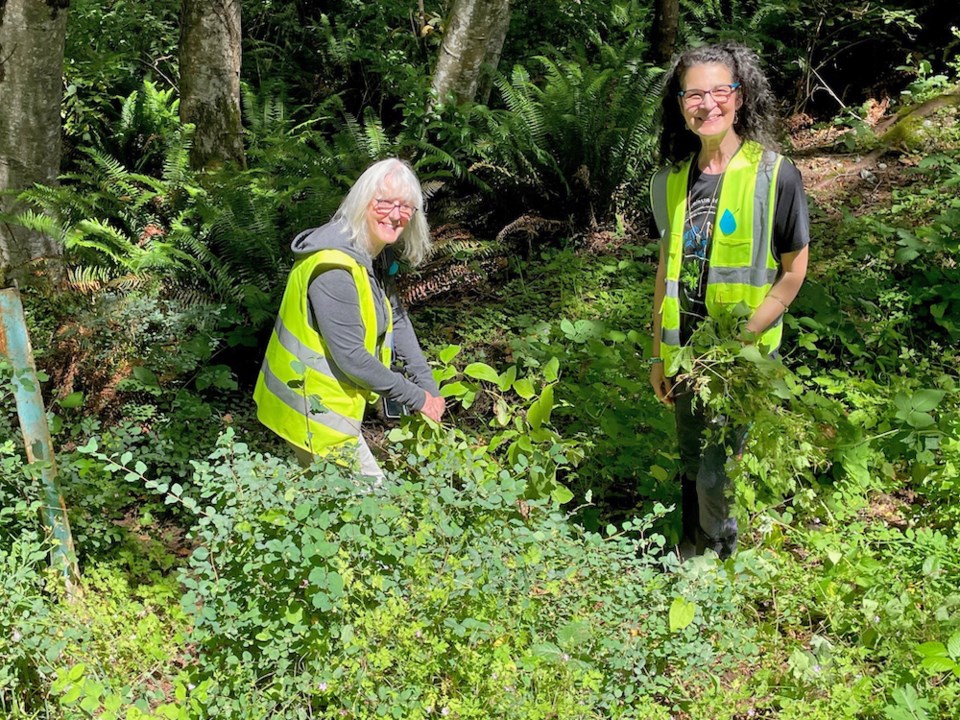It's cool under the Roberts Creek Lower Road bridge and two volunteers from the Sunshine Coast Streamkeepers Society are showing me how to spot coho fry in the clear waters.
“Look for their shadow on the water surface,” Shirley Samples tells me, and she and Streamkeeper Kelly Paddock gaze intently, becoming excited when they see the little swimmers darting about in the gravelly bank opposite.
The local folks at Streamkeepers are the front-line workers in sustaining the health of creeks and their banks for salmon spawning. That includes approximately 30 creeks between Port Mellon and Sechelt that trickle to the sea: Chapman, Wilson, Charman, Chaster and more. As volunteers they regularly assess environmental habitat, for example, how much gravel is available for laying eggs, what’s the temperature of the water (salmon don’t like heat), how much oxygen is in the water, and whether debris in the creek could block the salmon’s journey upstream.
“They have every challenge thrown at them,” Kelly says. “Raccoons, otters, bears and numerous human-caused obstacles in their path. That’s why we’re fighting for them,” she adds.
Shirley’s task on this day in July is to measure the temperature of the water while Kelly will measure its oxygen content. Both are using instruments purchased through grant funding from the Pacific Salmon Foundation, the Sunshine Coast Regional District and donations from the community. After they finish chatting with me, they’ll continue upstream to assess the creek and ensure it is ready before Shirley’s favourite time of the year: salmon spawning days in the fall.
“Some people will tell you that there are only a few salmon returning to a particular creek,” she says, “so why bother. But if you add up the collective number in all the streams, that’s a lot of salmon.”
Another daunting task involves getting down and dirty to rip out invasive plants around the creek banks, called the riparian areas. These areas extend 30 metres from the creek on either side by law and Shirley keeps eyes on their vigor.
“A healthy creek must have a healthy riparian area,” she tells me, while pulling at a morning glory that threatens to strangle other plants.
A few of the Streamkeepers’ volunteer contingent gather monthly for just this job. After the removal, it’s time to plant native species or encourage those already struggling: salmonberry, salal, Nootka rose, cedars and ferns. Shirley and Kelly have received training for the work they do, but they are quick to say that there are plenty of jobs for untrained people with an interest.
“We need more volunteers,” Shirley says, adding that counting the salmon as they return to spawn is also a necessary job. (Learn more at sunshinecoaststreamkeepers.com)
No training is needed for another task that encourages contributions from the public—spotting environmental hazards to the stream or riparian area from residential building development, logging, careless garbage disposal or the contaminants that run off roads. Report any sightings to Report All Poachers & Polluters (RAPP) line at 1-877-952-7277 or to Fisheries and Oceans Canada at 1-800-465-4336.



